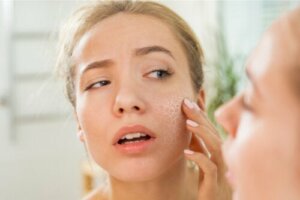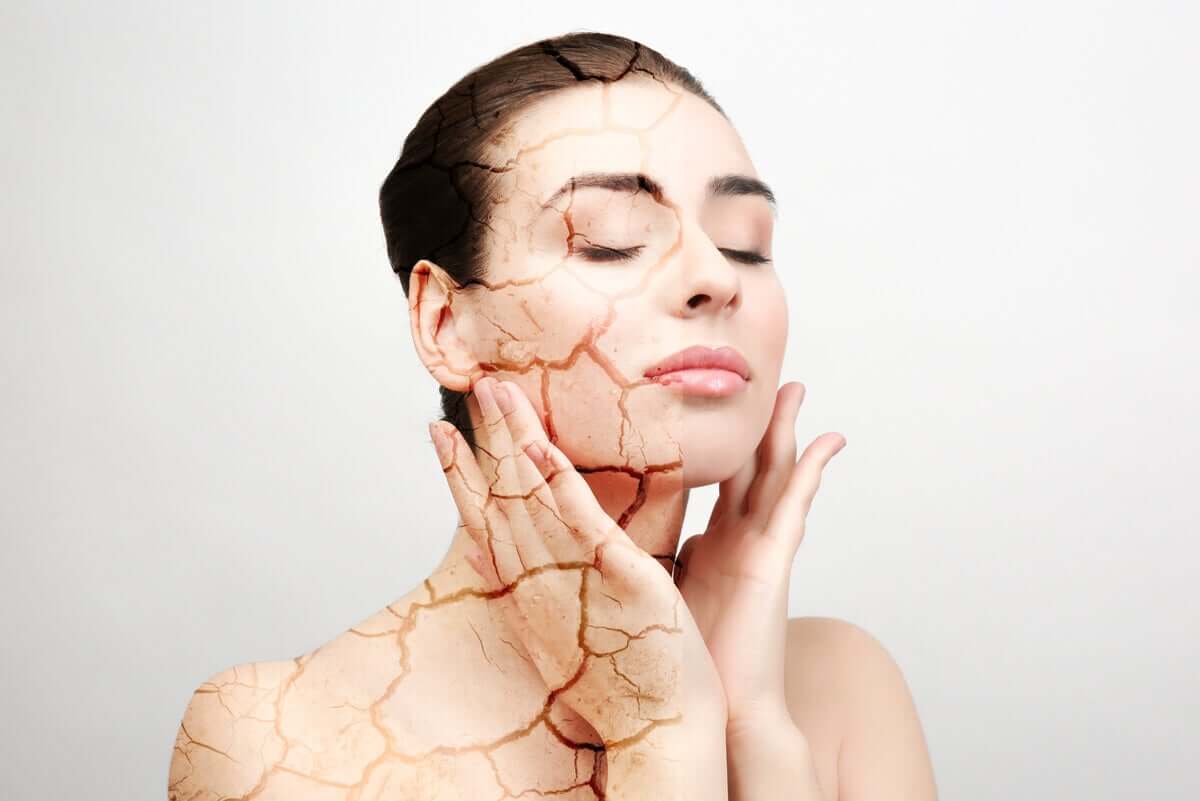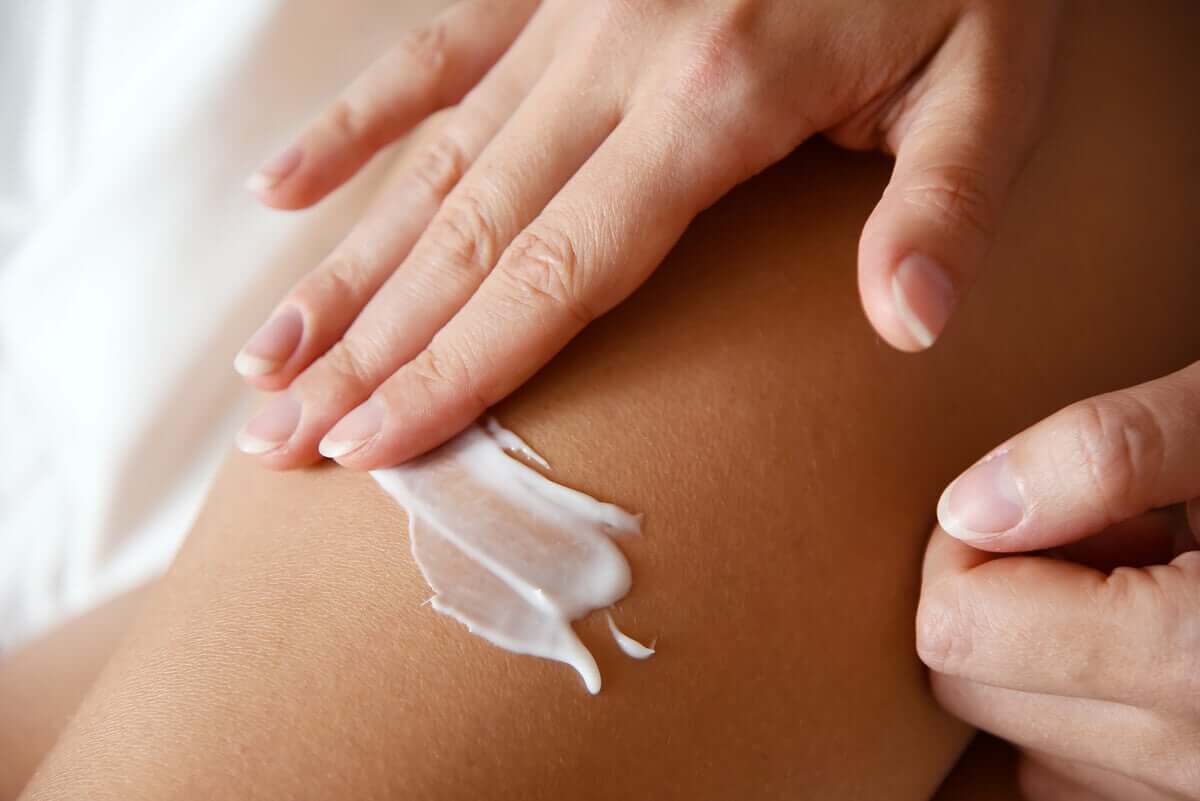What Are the Causes of Dry Skin?


Written and verified by the dermatologist Maria del Carmen Hernandez
Dry skin, or xerosis, is a common dermatosis that affects people of all ages and can appear on different parts of the body. Skin needs a consistent 10-15% water content to remain intact and maintain flexibility, so lower percentages negatively affect its elasticity. But what are the causes of dry skin, and what does it do to the skin?
When skin becomes dry, it causes itching which can later lead to abrasions and even infection. These outcomes can be minimized by using a humidifier in dry spaces, changing up bath products, and using lotions or moisturizers to replace lipid components.
What does dry skin look like?
When the skin loses too much moisture and becomes dehydrated, it can dry and crack. According to the American Academy of Dermatology, some of the signs and symptoms of dry skin include the following:
- Dryness and more notable fine lines
- Itchiness
- Cracked or scaly skin
- Roughness to the touch
- Redness
Dry skin can affect any part of the body and most frequently appears in the hands, arms, and legs. Staying hydrated not only improves the skin’s appearance and function, but it also helps ensure the body’s other organs work properly, too.

What are the causes of dry skin?
Xerosis, or xeroderma, is a common skin condition affecting millions of people around the world. It can show up occasionally due to changes in a person’s environment, use of a new skincare product, age, or illness. On the other hand, some people might suffer from chronic xerosis.
The majority of people experience bouts of dry skin at some point during the year because of either internal or external factors. Below are some of the most common ones.
Illness
Diabetes, thyroid disease, kidney disease, contact dermatitis, and atopic dermatitis can all cause extremely dry skin. These conditions can alter both the skin and the eyes’ moisture content. In other words, they can cause uncomfortable dry eyes in addition to dry skin.
The most common symptom of dry skin is itchiness, a constant and sometimes unbearable side effect of this condition. This is why it’s important that people living with these conditions continuously use moisturizers so they can prevent dryness.
You might like: Perioral Dermatitis: Symptoms and Treatments
Extreme climates
During the winter months where both the outside and inside air become dryer (think: heaters), the blood actually pulls away from the epidermis to keep the inner organs warm. This can cause the skin to dry out fairly quickly. On the other side of the spectrum, in warm, dry climates, the heat from the air and the use of air conditioners zaps moisture from the skin.
People living in these types of climates (and visitors, too) should try to take shorter showers and use warm water when possible. After, we recommend applying moisturizer to help protect the skin.
Excessive bathing
Showering too often is one of the most common causes of dry skin. A lot of the soaps and shower gels on the market contain surfactants, which break down dirt and oils on a person’s skin. While these help the skin feel nice and clean, this process can dry out the skin and cause short- to mid-term damage.
This can happen because chemical products don’t discriminate and also remove important lipid barriers on the skin, allowing germs and bacteria to find their way in.
Aging
The likelihood of developing xerosis increases with age due to changes in the keratinization (natural exfoliation) process and the lipids in the outer layer of the skin.
At around 40 years of age, the body drastically drops sebum production, which is responsible for keeping the skin soft and youthful. With each passing year, sebum production continues to decrease, leading to the skin drying out more easily.
Although xerosis is a common condition, it’s closely related to getting older; however, there are many tips for keeping skin hydrated and healthy even during aging.
Smoking
Cigarettes contain toxins and chemicals that can cause the skin to age prematurely. This, along with the accelerated aging process, can cause the skin to dry out even more.
People who smoke often have dry skin on the face and wrinkles around the mouth. Cigarettes speed up the degradation of the skin’s collagen and the small elastic fibers that form the foundation of the dermis. Because of this, cigarettes are linked to premature aging.
Read more: How Tobacco Affects the Skin
What is the skin’s pH and what does it have to do with dry skin?
The pH scale ranges from 1 to 14. A pH of 7 is considered neutral, and anything below it is considered acidic while anything above it is alkaline. The outer layer of human skin has a pH value between 4 and 6, indicating that it is naturally acidic.
Skin is made up of sebum, amino acids, and fatty acids. As the latter two names might give away, these components are all acidic, which help the skin prevent bacterial colonization. Likewise, the lipid layer is made up of fatty acids, cholesterol, and ceramides that work together as a natural water repellent.
The majority of disease-causing bacterias are easily thwarted by the acidity of human skin. However, this protective barrier can’t work efficiently when the skin is dry or damaged.
The inner layers of the skin have a pH value of around 7.4, which is the ideal level for bacteria colonies to thrive. Therefore, xerosis is a risk factor for infectious dermatitis.

Hydrating dry skin
The best thing a person can do when experiencing dry skin or xerosis is to take short showers with warm water and apply a liberal layer of moisturizer immediately after drying off. This is when the skin is most receptive to absorbing the emollients needed to strengthen its protective barrier.
Remember, itchiness is a classic symptom of dry skin. So, at the first sign of even the slightest itch, take it as your skin’s way of telling you it needs to be rehydrated and apply your favorite moisturizer.
All cited sources were thoroughly reviewed by our team to ensure their quality, reliability, currency, and validity. The bibliography of this article was considered reliable and of academic or scientific accuracy.
- Pons-Guiraud A. Dry skin in dermatology: a complex physiopathology. J Eur Acad Dermatol Venereol. 2007;21 Suppl 2:1-4. doi:10.1111/j.1468-3083.2007.02379.x
- Hashizume H. Skin aging and dry skin. J Dermatol. 2004;31(8):603-609. doi:10.1111/j.1346-8138.2004.tb00565.x
- Siddappa K. Dry skin conditions, eczema and emollients in their management. Indian J Dermatol Venereol Leprol. 2003;69(2):69-75.
- Gin, H., et al. “Treatment by a moisturizer of xerosis and cracks of the feet in men and women with diabetes: a randomized, double‐blind, placebo‐controlled study.” Diabetic Medicine 34.9 (2017): 1309-1317.
- Andriessen A. Prevention, recognition and treatment of dry skin conditions. Br J Nurs. 2013;22(1):26-30. doi:10.12968/bjon.2013.22.1.26
- Ali SM, Yosipovitch G. Skin pH: from basic science to basic skin care. Acta Derm Venereol. 2013;93(3):261-267. doi:10.2340/00015555-1531
- Lambers H, Piessens S, Bloem A, Pronk H, Finkel P. Natural skin surface pH is on average below 5, which is beneficial for its resident flora. Int J Cosmet Sci. 2006;28(5):359-370. doi:10.1111/j.1467-2494.2006.00344.x
- Misery L. Nicotine effects on skin: are they positive or negative?. Exp Dermatol. 2004;13(11):665-670. doi:10.1111/j.0906-6705.2004.00274.x
- Augustin, Matthias, et al. “Diagnosis and treatment of xerosis cutis–a position paper.” JDDG: Journal der Deutschen Dermatologischen Gesellschaft 17 (2019): 3-33.
- Yadgar, Ramsin Joseph, and Adam J. Friedman. “Efficacy of a Skin Condition-Adapted Solution for Xerosis and Itch Relief Associated With Aging.” Journal of drugs in dermatology: JDD 15.11 (2016): s91-s94.
This text is provided for informational purposes only and does not replace consultation with a professional. If in doubt, consult your specialist.








